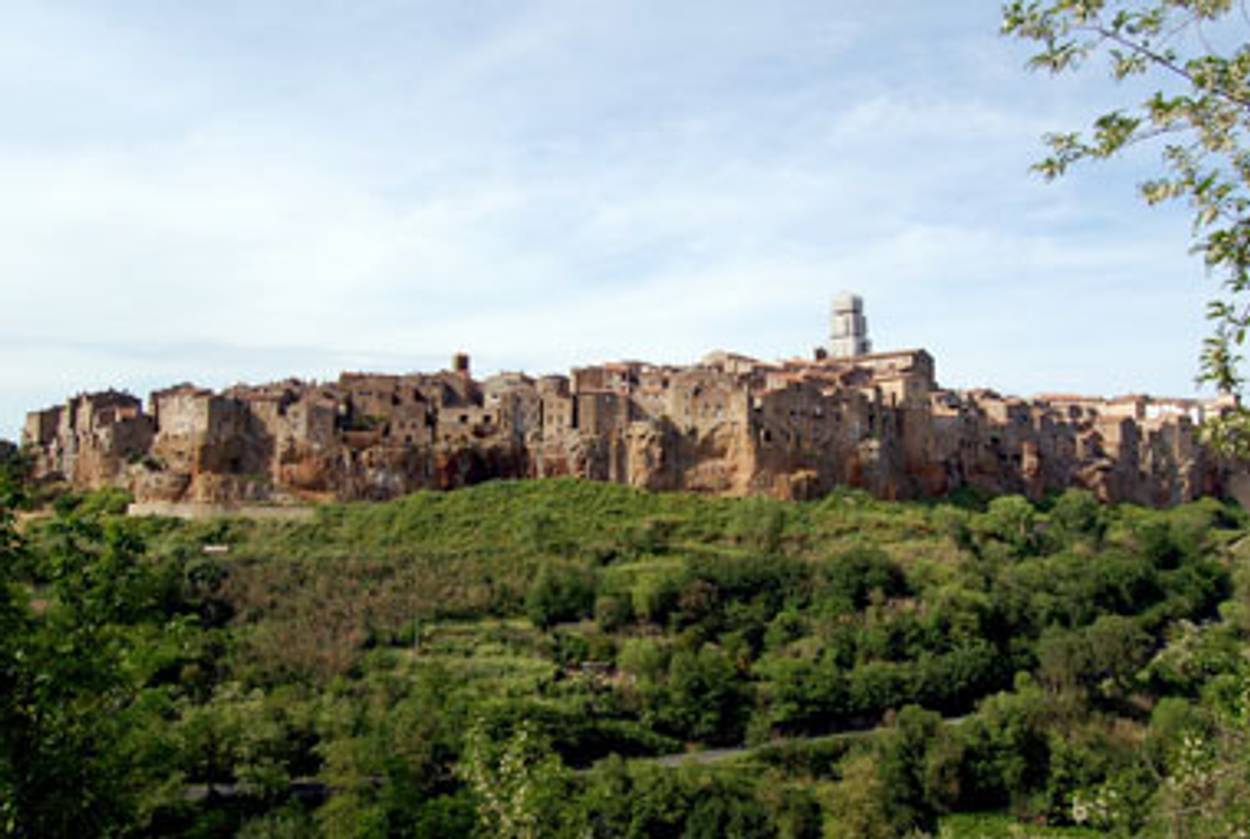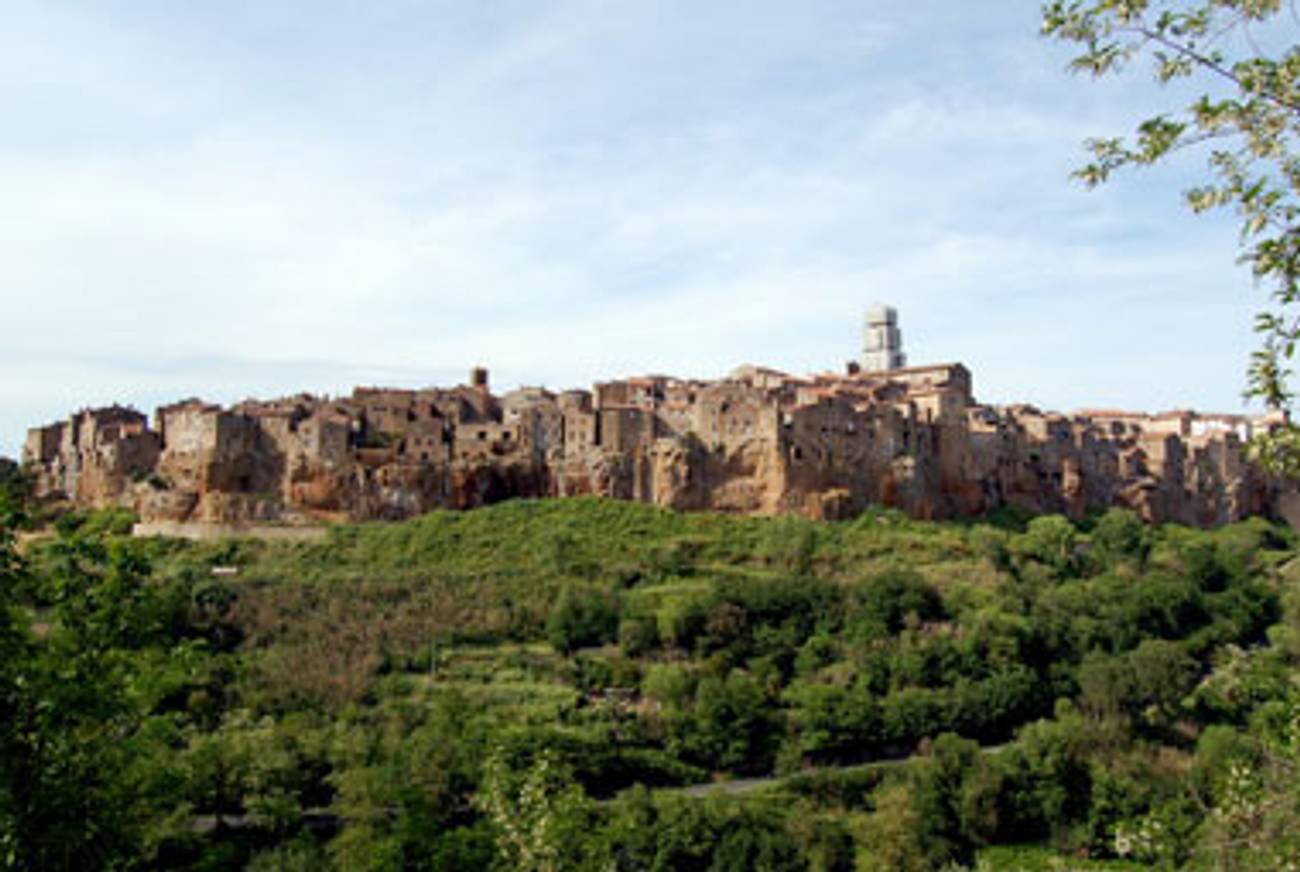Brisket Bolognese
Edda Servi Machlin introduced Italian-Jewish cooking to America




I get a little exercised whenever I hear the word “authenticity” used to describe a cuisine, since it implies that one cuisine is the real thing and another is a fake. Tex-Mex often gets branded as “inauthentic,” as does most of the Chinese food we spoon out of white cardboard containers. Yet Tex-Mex is the cuisine that developed after contact between border settlers in Texas and native Mexicans. The Chinese food we’re used to is the cooking style that sprang up after Chinese immigrants had spent some time in the States. These are not, as some people insist, diluted, impure styles. They are rather another step in culinary evolution. In the culinary world, where I currently dwell as a student at the Culinary Institute of America, Italian cooking is subject to this sort of judgment perhaps more than any other cuisine.
Thanks in large part to companies like Prince and Ragu, many of our ideas of Italian food revolve around pasta and tomato sauce, chicken parmesan, and sausage and peppers. It may not be real Italian food, but it is real Italian-American food. Meantime, a whole industry tells us that Italian cuisine encompasses more than marinara. Marcella Hazan, Paul Bertolli, Lydia Bastianich, and the omnipresent Mario Batali have staked their careers on broadening the Italian culinary horizon.
Add to their ranks Edda Servi Machlin, who wrote The Classic Cooking of the Italian Jews: Traditional Recipes and Menus and a Memoir of a Vanished Way of Life, published by Giro Press more than 28 years ago. Though her original book is long out of print, many of its recipes are included in the still-available Classic Italian Jewish Cooking. Her pioneering example also inspired a number of other books on Italian-Jewish cooking, notably Joyce Goldstein’s Cucina Ebraica and The Jewish-Sicilian Cookbook by Pamela Hensley Vincent.
While Jews were and are scattered throughout Italy, the region of Pitigliano in Tuscany was once home to is largest concentration, and that’s where Machlin grew up. Because of community’s relative robustness, Pitigliano became a hub known for its libraries—one of religious texts and another for secular texts—that drew scholars from all over the country. It had an old, beautiful synagogue. There was no discernable tension between Pitigliano’s Jews and Catholics, many of whom adopted Hebrew words into their vocabulary and Jewish dishes, like a honey-nut “sfratti,” the classic pastry of Pitigliano’s Jews, into their cooking.
Machlin’s book, which tells the story of Pitigliano Jews before it gets to recipes, is ultimately commemorative. Although she paints her early childhood as largely idyllic, she came of age as Fascism started exerting itself. The tone of Machlin’s story—so joyous and nostalgic at the start—becomes elegiac when she describes how the Fascists’ grip first eroded the bonds between the Jews and Catholics, then led to physical segregation, discrimination, and, ultimately to persecution and destruction of the synagogue. (It has since been restored but is now a museum, not a house of worship.) The town itself was bombed during World War II and today has lost its Jewish population, and Machlin’s recipes are, perhaps, the most vivid and living keepsakes of a heritage that spanned a thousand years.
Though Machlin’s recipes deviate from some Italian conventions (she refrains, for example, from butter in veal scallopine in deference to the rules of kashrut, substituting instead olive oil,), she take the same approach as other Italian food champions. The cuisine, they all imply, is authenticially Italian because it fetishizes stark simplicity and out-of-the-garden freshness,an attitude many Italian cooks seem to feel is unique to the terroir of Italy. Of course, there are ways of disguising a lack of these components.
On my initial trip through the book, I found a recipe for risotto with mushrooms, an easy cheat if your ingredients are subpar. Simply dump as much cream and parmesan in as you can, and no one will know whether your vegetables are inferior. Most risotto recipes call for chicken or beef stock, and virtually every one is finished with parmesan. If you are kosher observant, you must find another way. The Pitigliano Jews use water. This may not sound like a big deal, but to an aspiring culinary professional, like me, it was astounding. At school, we’re taught the immutable doctrine that stock is the key to risotto. And to not use it, well, now I’m tempted to throw the word “authentic” around. I wondered, why would Machlin not recommend vegetable stock? Perhaps because boiling pounds and pounds of perfectly edible vegetables just to extract their flavor is, arguably, wasteful.
I had to try using Machlin’s water method to see the results. They were surprising. The finished risotto was a little lighter on the palate than what I was used to, but tomato paste, seasoning, and salt helped compensate for the subtle depth of a good stock. And a generous helping of parmesan (the real thing, not the dreck from a jar), made the risotto great.
Not all of Machlin’s recipes are kosher variations on classics. She takes great pains to point out that artichoke dishes—risotto, golden fried, stuffed—so widely consumed today were the gift of Jewish cooks. At one time Jews were the only Italians using that vegetable. The same was true of eggplants and fennel, she points out, quoting the legendary cookbook author Pellegrino Artusi, who wrote that these vegetables “were considered vile food of the Jews.” The same is true for a veal and romaine salad, thought to have originated among Jewish cooks during Roman antiquity, now commonly found in trattorias. Sometimes, Machlin demonstrates the ingenuity in keeping kosher while simultaneous indulging in Italian specialties: the country’s love affair with pork is well documented, and Italians justly pride themselves on their prosciuttos, guancinales, and salamis. Machlin includes a number of cured meat recipes but makes prosciutto and salami out of goose rather than pork. Goose yields a similar amount of the fat essential to air-dried meats—but consuming it does not break any dietary laws.
Machlin includes a number of recipes for holidays and special occasions and offers complete menus for the High Holidays, Hanukkah, and Sukkot, some of which—like the chicken galantine—take some time and effort. But most of the dishes are straightforward, using few ingredients and the basic techniques of frying, braising, poaching, and roasting. This means each element needs to be of best quality—when a dish is simple, there’s not too many ways to disguise mediocre components—but it also underscores the book’s title. Machlin’s recipes are an illustration of how a bygone community ate day-to-day.
RECIPES
Risotto Coi Funghi (Risotto with Mushrooms)
¼ ounce imported dried porcini mushrooms
½ cup hot water
¾ pound fresh white mushrooms
1 small clove garlic, minced
½ cup olive oil
Salt
Freshly ground black pepper
1 tablespoon tomato paste
1 tablespoon freshly chopped Italian parsley
3 cups cold water
1 ½ cups short-grained rice (such as Arborio)
½ cup freshly grated parmesan cheese (optional)
Soak dried mushrooms in ½ cup hot water for five to 10 minutes. Wash, trim, and finely chop fresh mushrooms. Place in a small saucepan with garlic, oil, ½ teaspoon salt, and a dash or two of pepper. Lift soaked mushrooms from bath with a fork; reserve water. Chop finely and add to saucepan. Place on high heat and cook for approximately two minutes, stirring. Add tomato paste and cook for one more minute, stirring. Add the reserved mushroom water, taking great care to leave any dirt and sand from the soaked mushrooms at the bottom of the cup. Add the parsley and cook, uncovered, until all the liquid has evaporated and the sauce is nice and thick.
Bring three cups of water with a teaspoon of salt to a boil. Add rice and stir until boiling resumes. Lower heat and cook, covered, for about 13 minutes. Add mushroom sauce, stir to combine, and cook, covered, over low heat until rice is quite dry. Serve with or without cheese.
I also tried this recipe using the traditional method for making risotto. Sauté the rice in a few tablespoons olive oil and add about a cup of liquid. Stir constantly until the liquid is absorbed. Repeat with the other two cups of water. Add mushroom sauce and parmesan.
Scaloppine al Madera (Veal Scaloppine with Madeira Wine)
1½ pounds veal scaloppini
1½ teaspoons salt
¼ teaspoon freshly ground black pepper
½ cu unbleached flour
6 tablespoons olive oil
1 medium onion, minced
1 clove garlic, minced
1 tablespoon freshly chopped Italian parsley
1 cup Madeira wine
1 ½ cups tomato juice or two tablespoons tomato paste diluted in 1½ cups water
Sprinkle the veal with salt and pepper; dredge with flour, and pat to shake off the excess.Heat the oil in large skillet with the onion, and cook over moderate heat until the onion is golden brown. Temporarily remove onion to a dish. Add veal to skillet and brown for two minutes on each side.
Return onion to skillet; add garlic, parsley, and Madeira, and cook over high heat for one or two minutes. Add the tomato juice or diluted paste and simmer, covered, for five to seven minutes longer. If the veal is of good quality, it should not take any longer to be cooked through and tender. If prepared in advance, simply heat through before serving.
Jonathan Dixon is a writer in Brooklyn